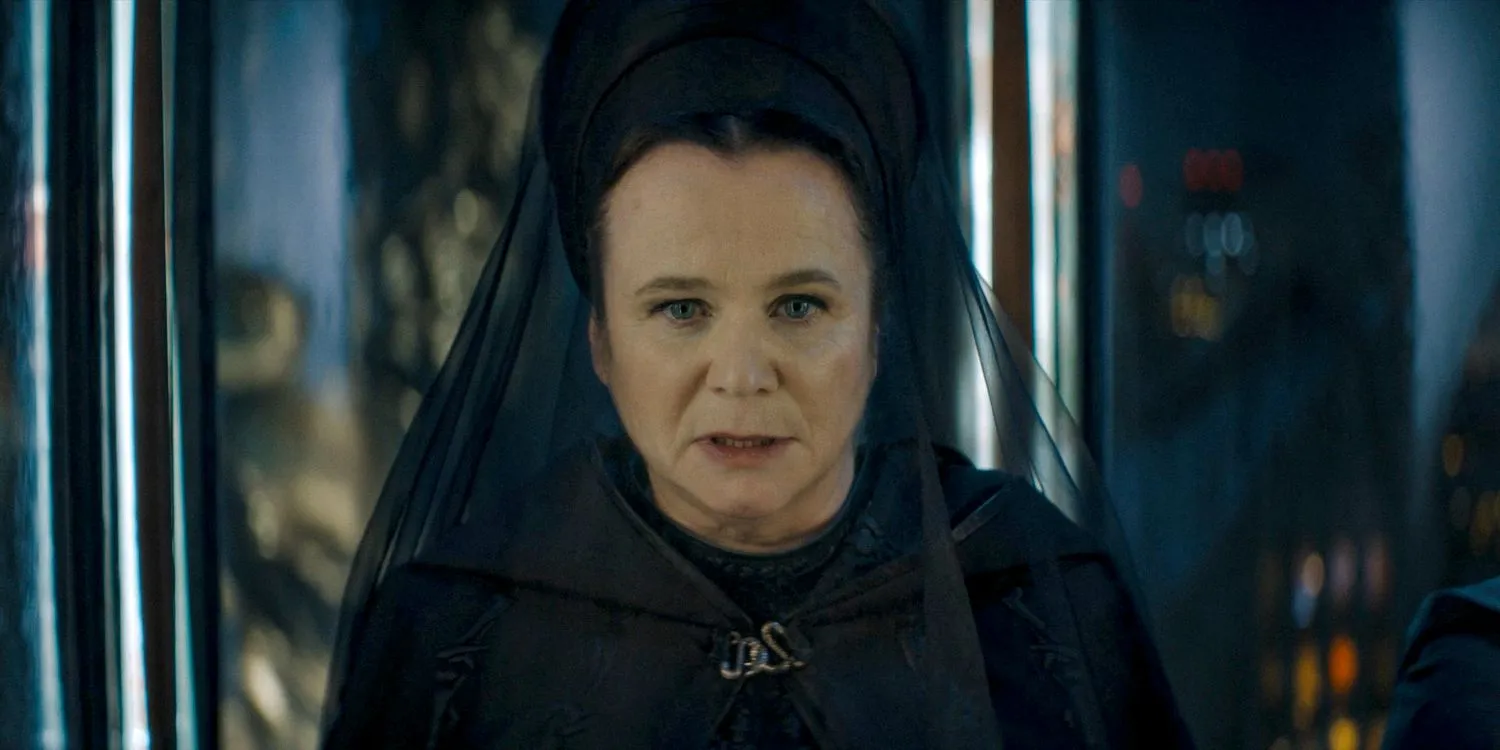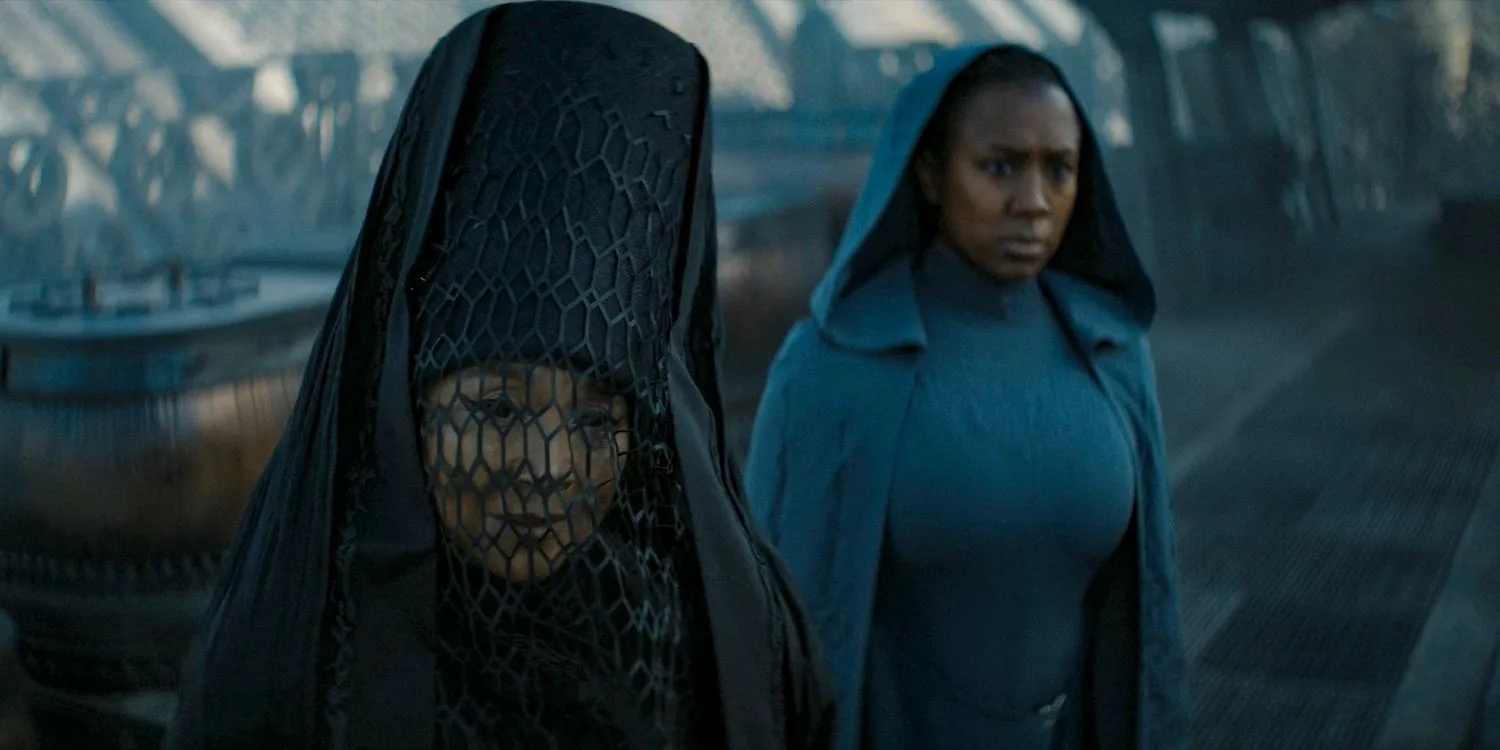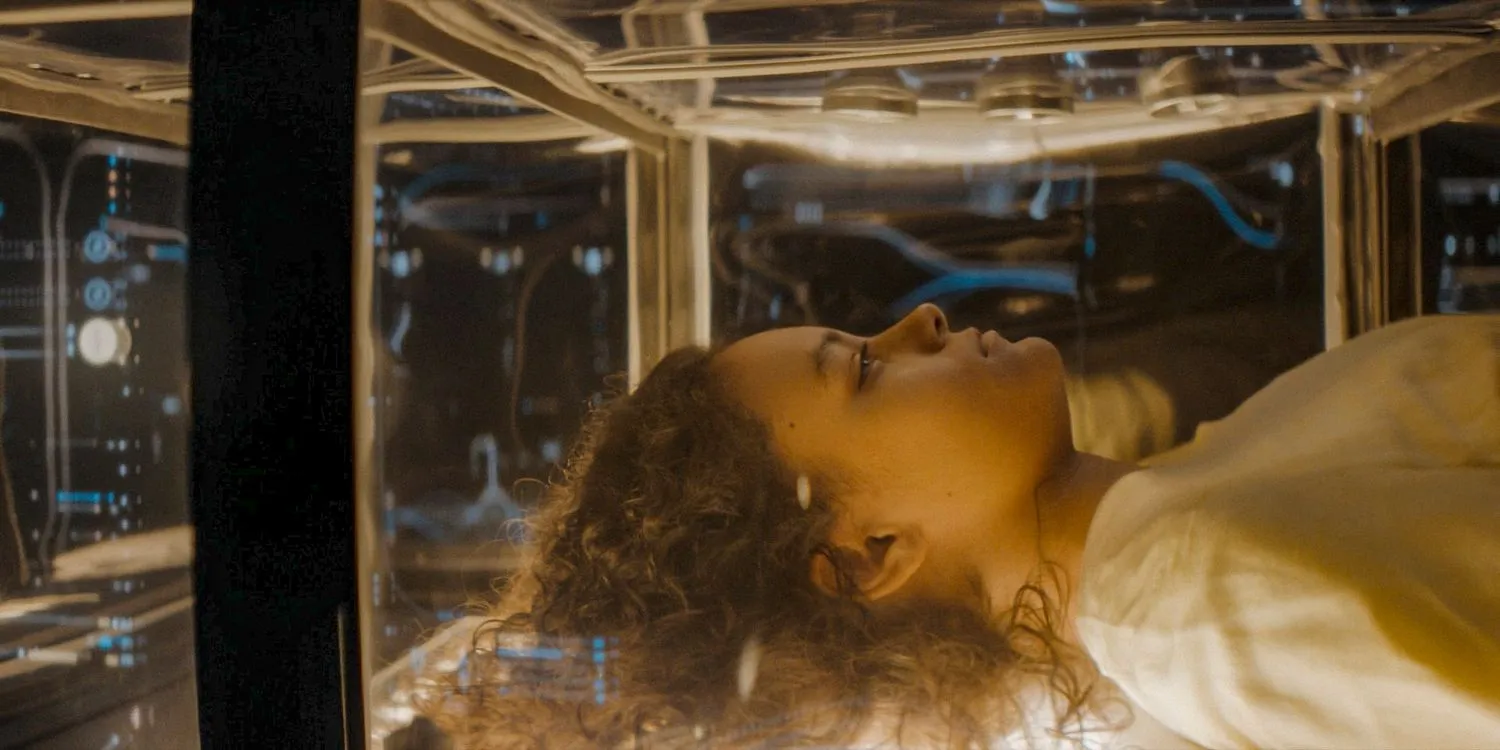
WARNING: This article contains spoilers for Dune: Prophecy episode 4.
Episode 4 of Dune: Prophecy, titled “Twice Born,”delves into a shared nightmare experienced by the Sisterhood, unveiling chilling truths about the impending Reckoning. Set over 10,000 years before the events chronicled in Denis Villeneuve’s films Dune (2020) and Dune: Part Two (2024), the series explores the origins of the formidable Bene Gesserit sisterhood and their influence on humanity’s destiny.
The inaugural episode, “The Hidden Hand,”introduced viewers to Valya Harkonnen, portrayed by Emily Watson, alongside her sister Tula Harkonnen. Following this, episode 2 highlights the harrowing tale of Lila and her grandmother, Reverend Mother Dorotea, after Tula and Valya pressure Lila into participating in a deadly rite called The Agony. In episode 3, the narrative intensifies as Tula attempts to resurrect Lila after her apparent death during the ritual, resorting to dangerous technology. The fourth episode confirms that Lila was brought back to life through the Thinking Machine known as Anirul, as Tula’s control over her acolytes begins to slip away.
New episodes of Dune: Prophecy are released every Sunday at 9 PM on HBO and MAX.
Exploring the Sisterhood’s Nightmare in Dune: Prophecy Episode 4
The Sisters in Training Grasp at Their Throats as If Choking – Echoing Dorotea’s Fate

In episode 4, a spine-chilling communal nightmare unfolds among several Bene Gesserit trainees. The prominent character, Jen, awakens to find her peers thrashing as if choking, echoing the past massacre of Dorotea. Dorotea’s demise at the hands of Mother Reverend Superior Valya—who commanded her to slit her own throat using the Bene Gesserit’s Voice—serves as a dark backdrop to the sisters’ shared dream.
This collective vision emerges after Valya fails to successfully assert her Voice over Desmond Hart in the preceding episode. Her attempt to command Desmond to take his life is thwarted by his psychic abilities, a gift from the giant sandworm Shai-Hulud. Valya’s reaction suggests she faces a level of opposition she has not previously encountered. Intriguingly, despite her efforts to avert the Reckoning, Valya inadvertently becomes a key player in its unfolding, as indicated by the shared experience of the Sisterhood.
Why Only Jen Escapes the Shared Nightmare

Interestingly, Jen is the sole acolyte immune to the group’s shared nightmare, which results in her exclusion from a spice-induced practice led by Tula in the same episode. Throughout Dune: Prophecy, Jen emerges as a courageous and outspoken individual, relying less on the so-called “truth-sense”typical of Bene Gesserit training. Her rebellious nature sets her apart, presenting her as a natural leader who diverges from the Sisterhood’s expected norms.
Jen’s unpredictability positions her as less susceptible to the nightmare collectively haunting her peers. Moreover, her skepticism is highlighted by her vocal criticism of Tula and Valya’s reckless actions regarding Lila. Although it’s ambiguous why Jen evades the shared terror, she enigmatically envisions another sister, Emeline, harming herself in a dream—an ominous reflection of the truths Tula keeps hidden.
The Nightmare’s Links to Fear and the Reckoning
Visions Channeling the Godlike Spirit of Shai-Hulud






As Tula leads her fellow trainees through the nightmare once more, they become engulfed in vivid images of Arrakis and Shai-Hulud, feverishly capturing their visions through drawing. Among their creations are two white orbs, reminiscent of the giant sandworm’s blue-eyed spiritual essence, suggesting a godlike presence propelling the Reckoning forward.
Desmond Hart claims to have emerged from Shai-Hulud in a rebirth, hinting he embodies the “twice born”tyrant prophesied by the Reckoning. However, the revival of Lila through Thinking Machine technology adds another layer, as both characters can now be categorized under this unique concept of “twice born.”




Leave a Reply